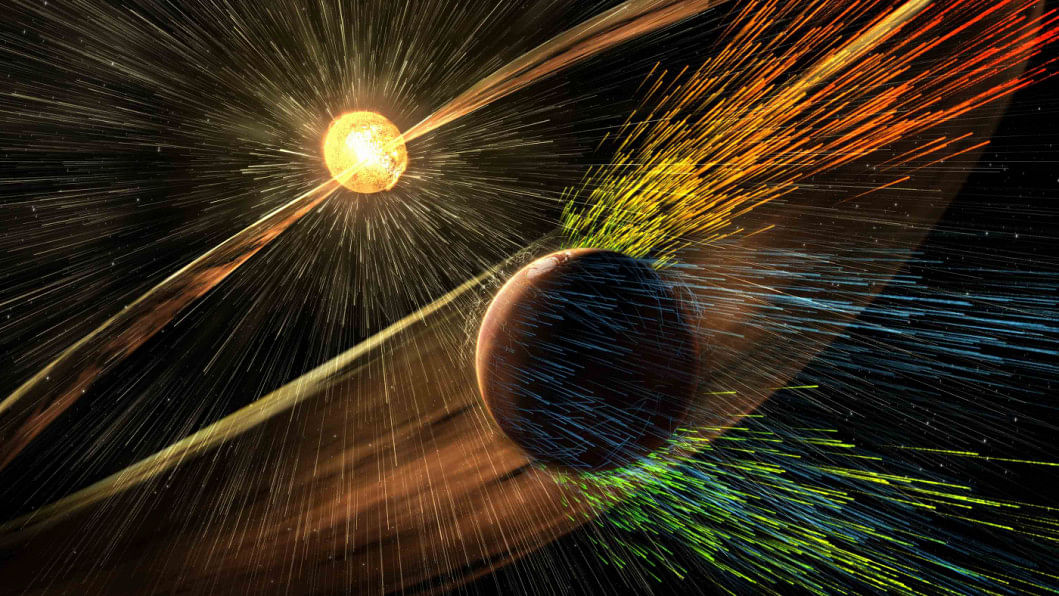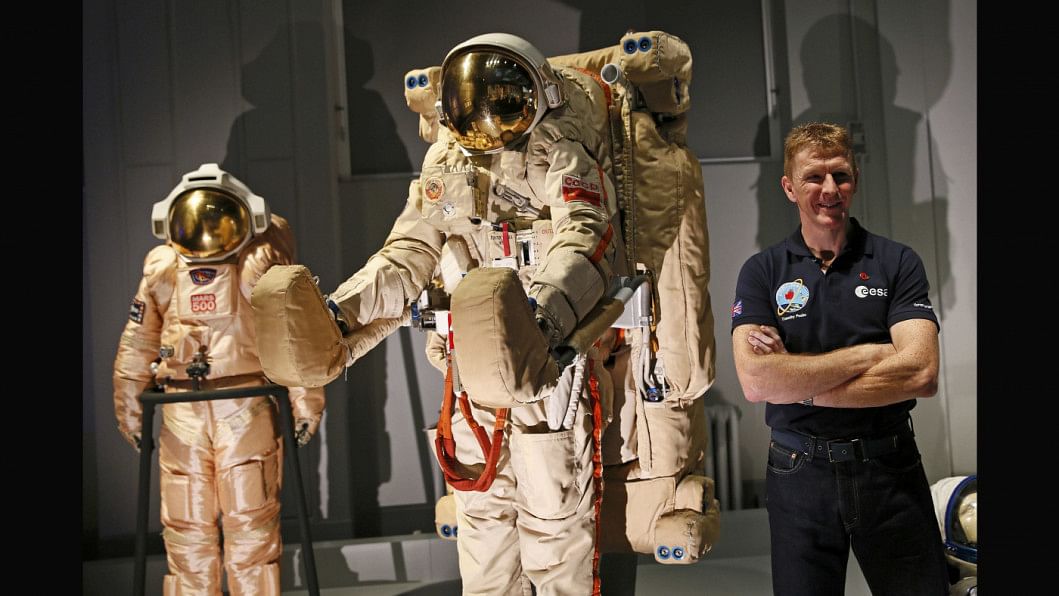Science and Environment
An undated artist's rendering depicts a solar storm hitting Mars and stripping ions from the planet's upper atmosphere in this NASA handout released November 5, 2015. Scientists have documented a solar storm blasting away Mars’ atmosphere, an important clue in a long-standing mystery of how a planet that was once like Earth turned into a cold, dry desert, research published on Thursday shows. On March 8, NASA’s Mars-orbiting MAVEN spacecraft caught such a storm stripping away the planet’s atmosphere, according to a report published in this week’s issue of the journal Science. Photo: Reuters
British astronaut Tim Peake poses before a news conference at the Science Museum in London, Britain November 6, 2015. Peake will be the first British astronaut to visit the International Space Station, in a European Space Agency mission due to be launched in December. Photo: Reuters
Salmon swim upstream in a river outside Yuzhno-Kurilsk, the main settlement on the Southern Kurile Island of Kunashir in this September 15, 2015, file photo. Researchers on November 5, 2015, said some fish and amphibians, when navigating murky freshwater environments like rivers and streams, can turn on an enzyme in their eyes that supercharges their ability to see infrared light, sharpening their vision in the muck and mire. Photo: Reuters
This NASA TV image obtained November 6, 2015 shows astronaut Scott Kelly as he makes an inspection on the International Space Station. Two US astronauts stepped out on a risky spacewalk Friday to complete the repair of an ammonia cooling system at the International Space Station. Photo: AFP
A model of the MAVEN spacecraft is seen as Bruce Jakosky, Mars Atmosphere and Volatile Evolution (MAVEN) principal investigator, discusses key science findings on solar wind from the agency’s ongoing exploration of Mars during a news briefing at NASA headquarters in Washington November 5, 2015. Photo: Reuters

















